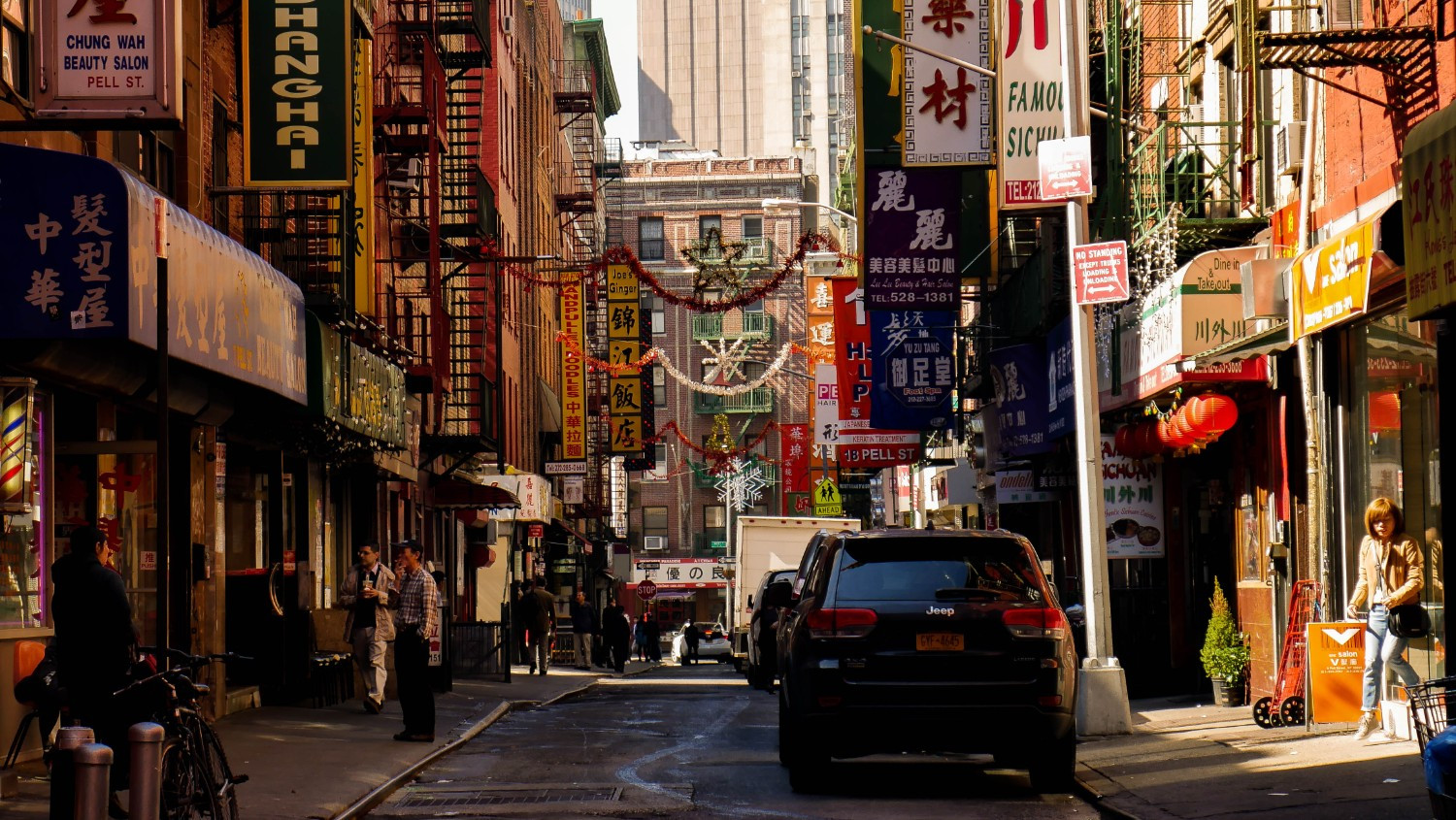Chinatown in New York City is an essential destination for anyone visiting the Big Apple. Steeped in history and serving as a vibrant gateway to Little Italy and other iconic NYC neighborhoods, Chinatown has blossomed into a unique cultural hub while honoring its Asian roots. Whether your interests lie in shopping, historical exploration, culinary adventures, or simply soaking in the atmosphere, Chinatown offers an enriching experience for every visitor.
The Historical Tapestry of Canal Street and Chinatown
Canal Street, the central artery of Chinatown, owes its name to a literal canal that once flowed through the area. This canal was constructed in the 19th century to alleviate contaminated water issues in lower Manhattan by diverting water into the Hudson River. As New York City expanded, this canal was cemented over, becoming an integral part of the city’s infrastructure and transforming into the bustling street we know today.
The origins of Chinatown can be traced back to the 1850s when Ah Ken, a Chinese immigrant, established a cigar shop in what was then known as Park Row. This marked the beginning of Chinese immigration to the area. Over subsequent decades, more Chinese immigrants arrived, seeking work in cigar manufacturing and establishing their own community.
A pivotal moment in Chinatown’s growth was the Hart-Cellar Act of 1965, which eased immigration restrictions. This led to a significant influx of immigrants, further solidifying and expanding the neighborhood. Today, New York City boasts the largest Chinese population in the United States, and one of the largest Chinese diasporas outside of Asia. This vibrant community represents diverse regions and languages, contributing to the rich tapestry of Chinatown.
Immersing Yourself in the Canal Street Experience
 Street vendors and bustling sidewalks on Canal Street in Chinatown, NYC, filled with shoppers and merchandise.
Street vendors and bustling sidewalks on Canal Street in Chinatown, NYC, filled with shoppers and merchandise.
Canal Street in Chinatown is an exhilarating sensory experience. The sidewalks teem with vendors, each vying for your attention with enticing offers on everything from designer-inspired handbags and novelty New York City souvenirs to fresh seafood sold by weight. The prevalence of Chinese characters on signs, addresses, and billboards creates an immersive and authentic atmosphere, setting this neighborhood apart within the city.
Shopping on Canal Street is unlike any other experience in New York City. Forget department stores; here, commerce spills onto the sidewalks. You might just stumble upon that must-have “Rolex” replica as a memento of your trip. Bargaining is not just accepted, it’s expected. Cash is the undisputed king on Canal Street, as many smaller shops and street vendors operate on a cash-only basis.
Savoring Authentic Chinese Cuisine Near Canal Street
To truly delve into the heart of Chinatown, venture beyond Canal Street and explore the charming side streets for an authentic Chinese culinary adventure. For classic Cantonese fare, dim sum is always an excellent choice – consider visiting Golden Unicorn for a traditional experience. If you crave the iconic soup dumplings, Joe’s Shanghai is a renowned destination. No matter your choice, Chinatown’s diverse culinary scene promises a satisfying and flavorful experience.
Exploring Beyond Canal Street: Chinatown’s Neighborhood and Beyond
One of Chinatown’s strategic advantages is its proximity to other captivating New York City neighborhoods. Located a stone’s throw from SoHo and Little Italy, Chinatown provides a perfect starting point to explore multiple iconic areas in a single visit. Consider joining a walking tour that encompasses Chinatown, SoHo, and Little Italy for a comprehensive neighborhood experience.
A guided tour offers invaluable insights, pointing out key landmarks, sharing intriguing historical tidbits and local lore, and revealing hidden gems often missed by independent travelers. After your tour, extend your exploration into Little Italy with a visit to Ferrara Bakery on Grand Street, a short walk from Chinatown, and indulge in their famous cannoli.
SoHo, renowned for its upscale boutiques and distinctive cast-iron architecture, is another must-explore neighborhood adjacent to Chinatown. Your tour guide can provide recommendations for SoHo’s highlights, but for those with a sweet craving, Dominique Ansel Bakery is a must-visit for the globally celebrated Cronut®. Yes, Cronuts are still a delightful and sought-after treat!
Planning Your Visit to NYC Chinatown near Canal Street
Is Chinatown and Canal Street Safe?
Navigating the lively streets of Chinatown, especially along Canal Street, can feel overwhelming due to the dense crowds. While Chinatown is generally safe, and always bustling with people, it’s prudent to be mindful of your belongings, particularly bags and wallets, as you would in any busy urban environment.
Like much of Manhattan, Chinatown is reasonably safe even at night. Using common sense is key in any area of New York City. Traveling in pairs or groups is advisable, and if you ever feel uneasy or disoriented, simply retrace your steps to a more familiar area.
Locating Chinatown and Canal Street
Perhaps surprisingly, New York City is home to multiple Chinatowns. The most well-known, and the one discussed here, is situated in Manhattan. However, Flushing, Queens, also boasts a significant Chinatown district. In total, New York City encompasses nine distinct Chinatowns, reflecting the widespread Chinese diaspora within the city.
Manhattan’s Chinatown is easily identifiable upon arrival. The abundance of Chinese signage and distinct architectural styles immediately signal your location. Chinatown’s boundaries are roughly defined by Grand Street to the north, Chrystie Street to the east, East Broadway to the south, and Broadway to the west.
Reaching Chinatown and Canal Street is convenient via public transportation. The Canal Street station is served by the N, Q, R, W trains (yellow line) and the 4, 5, 6 trains (green line), providing easy access to the heart of the neighborhood.
The Authentic Charm of Canal Street and Chinatown
Visitors are drawn to Chinatown for various reasons: the enticing cuisine, the vibrant spectacle of street life, or the unique cultural immersion. A stroll down a side street adorned with shops, restaurants, and traditional Chinese lanterns embodies the classic New York City experience, making Chinatown an ideal destination for those seeking authenticity and cultural distinctiveness. Furthermore, its proximity to SoHo and Little Italy makes a guided neighborhood tour an efficient way to experience multiple facets of downtown Manhattan in a short amount of time.
Chinatown stands as a testament to New York City’s celebrated diversity. For nearly 150 years, Chinese families have established roots in Chinatown, preserving their cultural heritage while adapting to a new home far from their origins. Yet, as you wander through Mott or Pell Streets, you’ll recognize the unmistakable New York City spirit interwoven into the fabric of Chinatown.
In Chinatown, culture and city converge harmoniously, creating a dynamic and beloved New York City neighborhood renowned worldwide. Canal Street serves as the energetic epicenter of this cultural fusion, inviting exploration and discovery.

